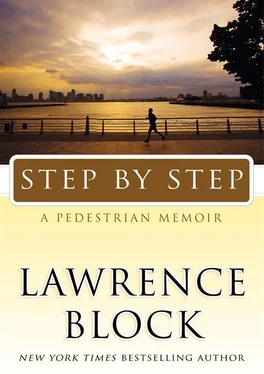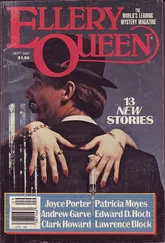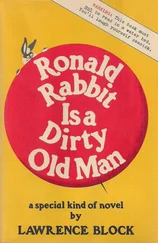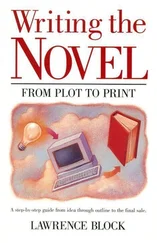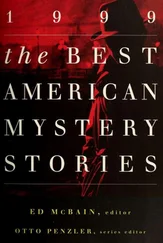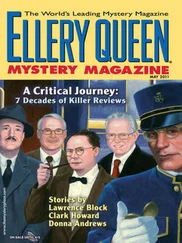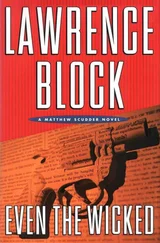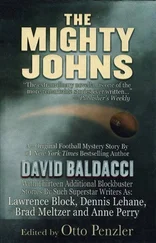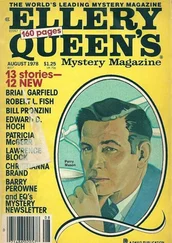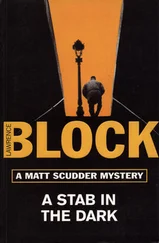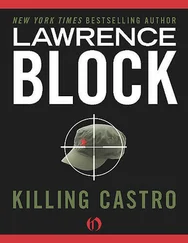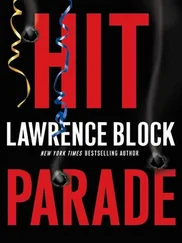Lawrence Block - Step by Step
Здесь есть возможность читать онлайн «Lawrence Block - Step by Step» весь текст электронной книги совершенно бесплатно (целиком полную версию без сокращений). В некоторых случаях можно слушать аудио, скачать через торрент в формате fb2 и присутствует краткое содержание. Год выпуска: 2009, ISBN: 2009, Издательство: William Morrow, Жанр: Биографии и Мемуары, Юмористические книги, на английском языке. Описание произведения, (предисловие) а так же отзывы посетителей доступны на портале библиотеки ЛибКат.
- Название:Step by Step
- Автор:
- Издательство:William Morrow
- Жанр:
- Год:2009
- ISBN:978-0-06-172181-6
- Рейтинг книги:3 / 5. Голосов: 1
-
Избранное:Добавить в избранное
- Отзывы:
-
Ваша оценка:
- 60
- 1
- 2
- 3
- 4
- 5
Step by Step: краткое содержание, описание и аннотация
Предлагаем к чтению аннотацию, описание, краткое содержание или предисловие (зависит от того, что написал сам автор книги «Step by Step»). Если вы не нашли необходимую информацию о книге — напишите в комментариях, мы постараемся отыскать её.
bestselling author comes a touching, insightful, and humorous memoir of an unlikely racewalker and world traveler.
Step by Step — читать онлайн бесплатно полную книгу (весь текст) целиком
Ниже представлен текст книги, разбитый по страницам. Система сохранения места последней прочитанной страницы, позволяет с удобством читать онлайн бесплатно книгу «Step by Step», без необходимости каждый раз заново искать на чём Вы остановились. Поставьте закладку, и сможете в любой момент перейти на страницу, на которой закончили чтение.
Интервал:
Закладка:
Coffeyville would have been well worth a detour, but none was required. Because, after we’d seen all there was to see in the museum, and mused on bank robbery as a preparation for dabbling in Hollywood real estate, we just kept on going north on U.S. 169 to Chanute, turned west on State Highway 39, and a few miles down the road we were in Buffalo, Kansas.
We spent the night in a motel in Fort Scott, Kansas, that had more houseflies than we’d ever encountered anywhere. We changed our room, and the new room was just as bad. We swatted the little devils until our arms ached, and eventually we went to sleep, and in the morning we drove across into Missouri and passed through the towns of Nevada and Bolivar on our way to, yes, Buffalo.
Funny what you remember. I can trace our route — parts of it, anyway — because I highlighted it in yellow in that road atlas. And when I do, things come back to me that I haven’t thought of in years. Not those two Dalton sites, I’ve thought often enough of them, and Keller visited them both in Hit Parade . (On that same trip, Keller also managed a visit to a John Dillinger museum, in Nashville, Indiana. We went there, too, but in a different phase of the Buffalo hunt. It wasn’t when we crossed the northern part of the state to pick up Buffalo, Indiana, but on a later visit, after we’d paid a visit to Buffaloville, Indiana, a little ways east of Evansville.)
But I’d forgotten that fly-infested motel in Fort Scott, and the dim proprietor thereof, who seemed implausibly astonished to learn that our room was buzzing with them, but quick enough to offer us a flyswatter. All of that had slipped my mind, as well it might, but it came back to me as I studied the atlas and followed the yellow line toward the Missouri border.
Buffalo, Wyoming, was an obvious destination. With a population of almost four thousand, it was the largest Buffalo but for my birthplace, and one I’d been aware of since boyhood. It was large enough to offer us a choice of restaurants and motels, and after we’d eaten and slept we got back in the car and drove to Cody.
Where we stayed a week at the Hotel Irma, named for the daughter of the establishment’s founder and first owner, Buffalo Bill Cody. I’d been commissioned to write a lengthy autobiographical essay for a library reference work, and a week was time enough to do it, and Cody a pleasant venue for it, with several fine museums.
After Cody we visited Yellowstone, and continued north into Montana, first on 81 and then on 191. We were on the latter road because it would take us to Buffalo, Montana, but before we got there we came to the town of Harlowton, where we visited an unassuming little museum that, all things considered, had a lot to be unassuming about.
We spent a pleasant hour there, looking at stuff. Of all the wonders we saw, only one sticks in my mind, but it may be enough to give the flavor of the place. Some soft-drink manufacturer — Pepsi, I think it was, but it may have been 7-Up — had launched a promotion a few years back featuring a different commemorative can for each of the fifty states. The idea was that you could buy the cans, drink their contents (or pour the stuff down the sewer, as you preferred), and then you could collect the empties, displaying them proudly until the day came when your mother made you throw them out.
Well, one fellow had collected all fifty, and instead of throwing them out he’d donated them to the local museum, and there they were, all fifty of the little darlings, looking for all the world like, well, like empty aluminum soft-drink cans. There was something magnificently postmodern about them: They were a wonderful sight to behold, and the wonder lay in the fact that they were there. By themselves they were nothing; displayed as they were, they remained nothing, but nothing on a grand scale.
One could make fun of the museum in Harlowton — indeed, I seem to have done just that — but here’s something to ponder. I’ve been to no end of museums over the years, large ones and small ones, but over time they and their contents tend to merge in memory. Or drop out of memory altogether.
Not Harlowton, Montana. I’ll remember those empty cans forever.
After a peak experience of that sort, Buffalo, Montana, figured to be anticlimactic. Not so. It was a first-rate Buffalo, every bit as memorable as a row of empty cans.
It was, alas, pretty much out of business. There were still people living there, but the place they were living had largely ceased to be a town. Once, though, it had been able to support a school, and the imposing red-brick building (or red stone; red, at any rate) was still standing, although most of its windows were gone.
And the schoolyard was now given over to the grazing of sheep, and there stood the abandoned school, its front door gaping, with sheep wandering in and out of it. One had to think of Mary, and her little lamb. On with the Buffalo shirts, out with the Polaroid. Click!
Periodically we interrupted the Buffalo hunt to leave the trail altogether. At one point we flew to Cairo to join a group tour of Egypt, climaxing in a Nile cruise. In some English novel or other a Colonel Blimp type had complained of something he called Gyppo tummy, and by the time I got off that boat I knew what he meant.
Later that same year we combined two invitations, the first to an Italian film festival in Cattolica, the second to a Spanish crime festival in Gijón. We parked our car somewhere out west and flew first to New York and then to Milan. We got off there, and so did one of our three bags. When it became clear the others had plans of their own, we took a train and a bus and got to Cattolica, where we lived out of our remaining suitcase for a week. (Oddly, whichever one of us had done the packing had mixed things up, so our single bag contained something for each of us.)
At the week’s end we flew from Milan to Madrid and carried our bag on and off the plane. In Madrid we and forty or fifty other American and British crime writers boarded the Andalusian Express, a luxurious private train that took a full day to carry us a couple hundred miles north to the industrial port city of Gijón. The ride was quite wonderful, and somewhere in the course of it they served us lunch, and we shared a table with Don and Abby Westlake.
And Don, looking out the window at the Spanish countryside, told us about a friend of his named Jack Hitt, who had some years ago walked across all of this terrain to follow the course of an ancient pilgrimage over the Pyrenees to the city of Santiago de Compostela. There was this route, we learned, and pilgrims had walked it for over a thousand years, and they were still at it, schlepping from village to village in the sacred steps of St. Francis and St. Clare, and there were refuges for pilgrims where you could stay, and—
Lynne and I were sitting next to each other, with Don and Abby seated side by side opposite us. I remember this, because I remember that there was a point in the story where Don paused, for breath or wine or whatever, and just then Lynne and I turned as one, so that we were looking right at each other when we said, in a single breath, “We’ve got to do that.”
15
in the first week of May 1991, Lynne and I flew from New York to Toulouse, in the south of France. We stayed overnight at a hotel, and in the morning we hoisted our backpacks and started walking south. We were on our way to Santiago de Compostela, and intended to arrive there by the 25th of July, because we knew that pilgrims ideally reached the city by that date to celebrate the Feast of St. James.
We also knew that the traditional pilgrim route led through the French border town of St. Jean Pied-de-Port and its Spanish counterpart, Roncesvalles. But we’d decided to take a different route over the Pyrenees so that we could walk through Andorra. We’d never been to Andorra, and this seemed like a perfect opportunity to add it to our list, even if there wasn’t a single Buffalo in it.
Читать дальшеИнтервал:
Закладка:
Похожие книги на «Step by Step»
Представляем Вашему вниманию похожие книги на «Step by Step» списком для выбора. Мы отобрали схожую по названию и смыслу литературу в надежде предоставить читателям больше вариантов отыскать новые, интересные, ещё непрочитанные произведения.
Обсуждение, отзывы о книге «Step by Step» и просто собственные мнения читателей. Оставьте ваши комментарии, напишите, что Вы думаете о произведении, его смысле или главных героях. Укажите что конкретно понравилось, а что нет, и почему Вы так считаете.
